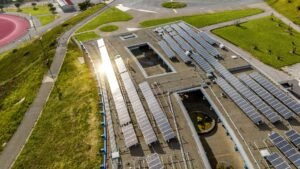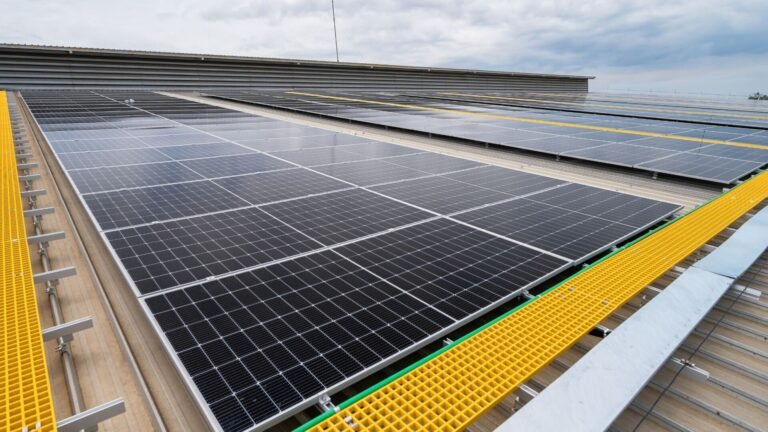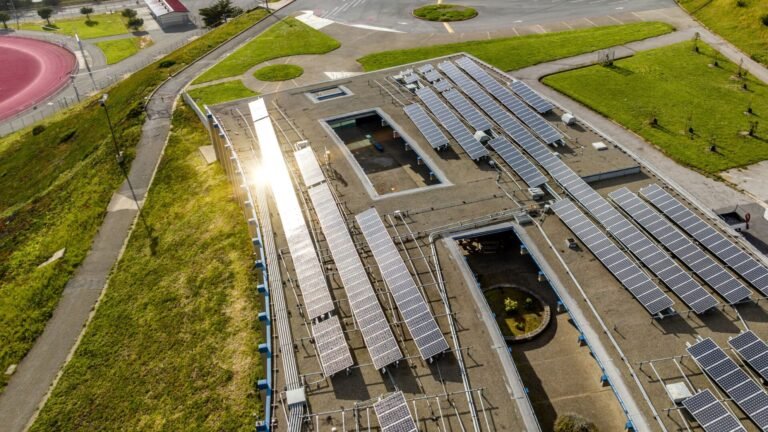The future of renewable solar energy is bright, literally and figuratively. As the world grapples with the pressing need to combat climate change and reduce our reliance on fossil fuels, solar energy stands out as a beacon of hope.
The advances in solar technology and the increasing affordability of solar panels are driving a revolution in how we produce and consume energy.
This shift is not only crucial for environmental sustainability but also for achieving energy independence and economic growth.
In this blog, we will explore the trends and innovations shaping the future of renewable solar energy, highlighting the transformative potential of this inexhaustible resource.
1. Technological Advancements in Solar Panels
One of the most significant trends in the future of renewable solar energy is the continuous improvement in solar panel technology.
Traditional silicon-based solar panels have seen remarkable efficiency gains, but the next generation of solar panels promises even greater advancements.
Innovations such as perovskite solar cells and multi-junction solar cells are pushing the boundaries of what is possible, offering higher efficiency rates and potentially lower costs.
Perovskite Solar Cells: These are a type of solar cell that has gained attention due to their high efficiency and relatively low production costs. Unlike traditional silicon cells, perovskite cells can be manufactured using a variety of methods, including printing, which could significantly reduce the cost of production.
Multi-Junction Solar Cells: These cells are designed to capture different wavelengths of sunlight, making them more efficient than single-junction cells. By stacking multiple layers of different materials, multi-junction solar cells can achieve efficiencies of over 40%, compared to the 15-20% efficiency of standard silicon panels.
2. Energy Storage Solutions
The intermittent nature of solar energy production has long been a challenge. However, the future of renewable solar energy includes significant advancements in energy storage solutions.
Batteries and other energy storage technologies are becoming more efficient and affordable, making it possible to store excess solar energy for use when the sun isn’t shining.
Lithium-Ion Batteries: These batteries have become the standard for energy storage, thanks to their high energy density and decreasing costs.
Innovations in battery technology are improving their lifespan and efficiency, further driving the adoption of solar energy systems.
Flow Batteries: Flow batteries are an emerging technology that offers the potential for large-scale energy storage. These batteries use liquid electrolytes to store energy, which can be scaled up more easily than traditional batteries. This makes them ideal for storing large amounts of solar energy for grid use.
3. Smart Grid Integration
As solar energy becomes more prevalent, integrating it into the existing power grid is crucial. The future of renewable solar energy involves the development of smart grids that can efficiently manage the distribution of solar power.
Smart grids use advanced communication and automation technologies to optimize energy use and ensure a reliable power supply.
Demand Response Systems: These systems can adjust the power consumption of devices in response to the supply of solar energy, helping to balance the grid and reduce energy waste.
For example, a smart thermostat could lower the heating or cooling in a home when solar energy production is high.
Distributed Energy Resources (DERs): DERs, including rooftop solar panels and small-scale solar farms, are becoming an integral part of the energy grid. Smart grids can efficiently manage these resources, ensuring that solar power is distributed where it’s needed most.
4. Solar-Powered Innovations
Beyond traditional solar panels, the future of renewable solar energy includes a wide range of solar-powered innovations that could transform various industries.
From solar-powered vehicles to solar desalination plants, these technologies are expanding the possibilities of solar energy use.
Solar-Powered Vehicles: While still in the early stages of development, solar-powered vehicles hold great promise.
By integrating solar panels into the design of cars, buses, and even airplanes, these vehicles can reduce their reliance on conventional fuels and lower their carbon footprint.
Solar Desalination Plants: Access to clean water is a critical issue in many parts of the world. Solar desalination plants use solar energy to power the process of converting seawater into fresh water.
This technology could provide a sustainable solution to water scarcity in arid regions.
5. Policy and Market Trends
Government policies and market dynamics play a crucial role in shaping the future of renewable solar energy. Supportive policies and incentives can accelerate the adoption of solar energy, while market trends can drive innovation and cost reductions.
Government Incentives: Many governments around the world are offering incentives to promote the use of solar energy.
These incentives can include tax credits, rebates, and grants for solar panel installations. By making solar energy more affordable, these policies are helping to drive its adoption.
Corporate Sustainability Initiatives: As more companies commit to sustainability goals, the demand for renewable energy, including solar power, is increasing.
Businesses are investing in solar energy to reduce their carbon footprint and demonstrate their commitment to environmental responsibility.
6. Global Expansion of Solar Energy
The future of renewable solar energy is not limited to a few regions; it is a global phenomenon. Countries around the world are recognizing the potential of solar energy and are investing heavily in its development.
Emerging Markets: Developing countries are increasingly turning to solar energy as a reliable and cost-effective source of power. In regions with abundant sunlight and limited access to traditional energy sources, solar power can provide a transformative solution.
International Collaboration: International organizations and governments are collaborating to promote the adoption of solar energy. Initiatives such as the International Solar Alliance aim to facilitate cooperation and knowledge sharing among countries to accelerate the global transition to solar energy.
Conclusion: The Future is Bright with Tamesol
As we look ahead, the future of renewable solar energy is filled with promise and potential. Technological advancements, innovative energy storage solutions, smart grid integration, and supportive policies are all contributing to a brighter, more sustainable future.
At Tamesol, we are at the forefront of this revolution, committed to delivering cutting-edge solar solutions that harness the power of the sun.
Our dedication to innovation ensures that we are continuously improving the efficiency and affordability of solar energy systems, making clean energy accessible to more people around the globe.
Join us on this journey towards a cleaner, greener world, and discover how our expertise and innovation can help you embrace the future of renewable solar energy.
The future of renewable solar energy is not just a vision; it is happening now, and Tamesol is proud to be a part of it.
We are driven by a passion for sustainability and a commitment to excellence, working tirelessly to push the boundaries of what solar energy can achieve.
Let’s work together to power a sustainable future with solar energy, creating a lasting positive impact on our planet and for generations to come.






